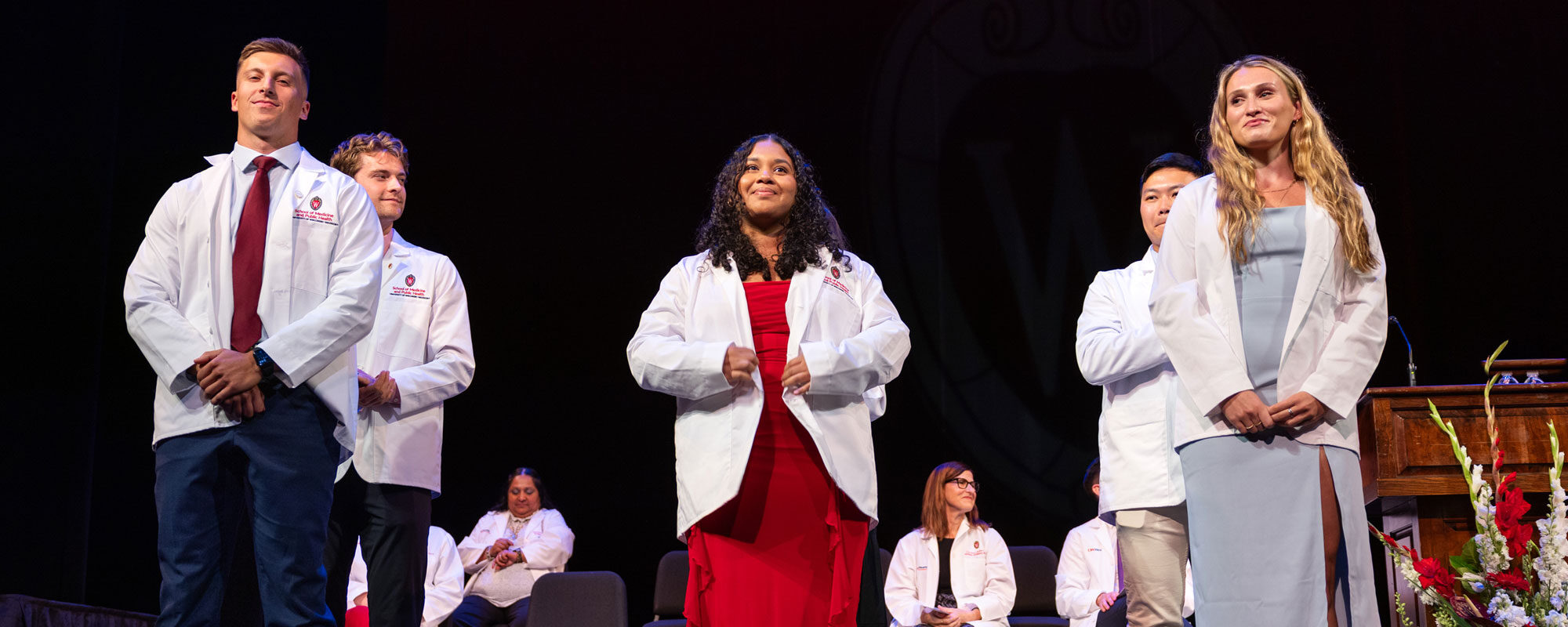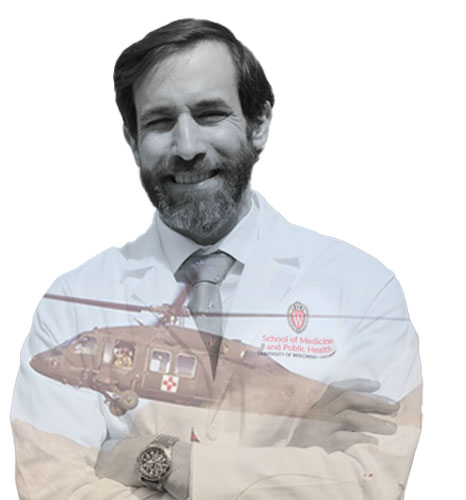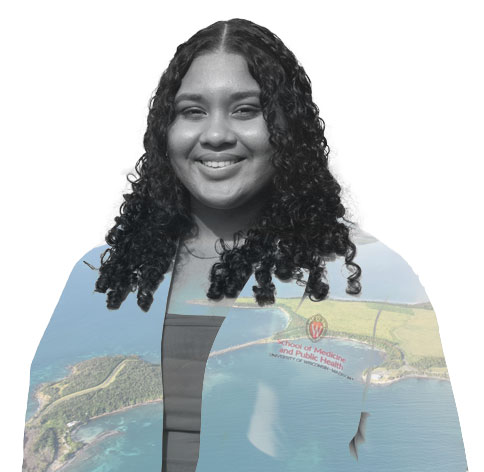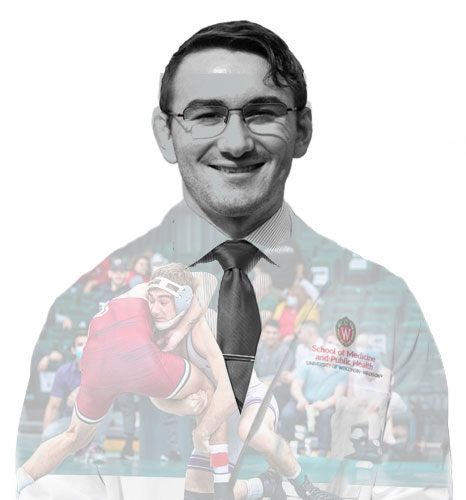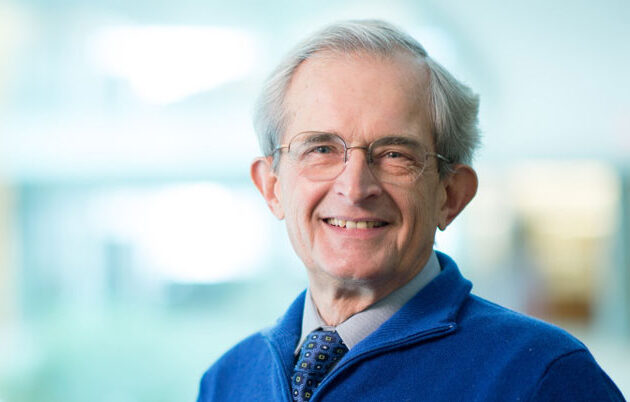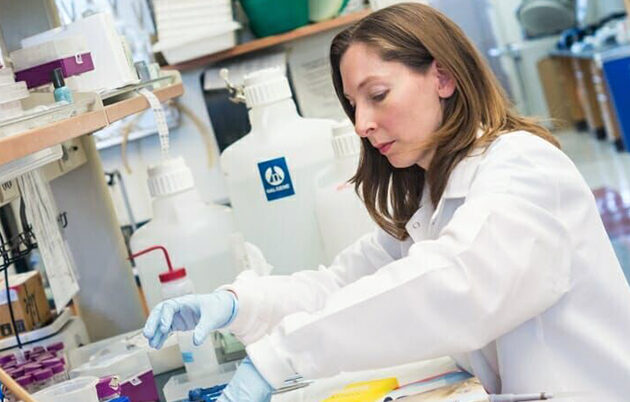Troy Fisher, an incoming MSTP student, will pursue an MD and a PhD in immunology. His research will focus on mass spectrometry proteomics, a powerful method for analyzing proteins to gain insight into disease states.
Fisher’s “why” stems from a deep desire to discover cures through research. He is not one to shy away from a challenge.
Growing up in the agricultural community of Garden City, Kansas, Fisher worked on his uncle’s dairy farm in the summers, starting at age 13. The early hours were grueling for a teenager, but Fisher said the job instilled in him the value of hard work.
“There were never any excuses not to get up and milk the cows,” he said. “My uncle would always say, ‘The cows don’t care if you’re not feeling well.’”
Among eight siblings, he is the oldest of six boys and has two older sisters. His “rowdy upbringing” made him a natural fit for wrestling, he said, but it was hard work and commitment that earned him a wrestling scholarship to Northwestern University.
“In wrestling, it’s all about the prep you go through to get to the match,” Fisher said. “You have to choose a healthy lifestyle. The dairy farm taught me to work hard, and wrestling taught me to take responsibility for my success or failure.”
Injuries piled up for Fisher at Northwestern, resulting in nine surgeries. During that challenging time, he developed a strong relationship with the team physician, Dr. Jeff Mjaanes, and began considering a career in medicine.
“I learned very quickly that a good physician can be a very valuable and impactful person in your life,” he said.
Fisher began volunteering in a hospital, and the experience fueled a drive to improve care through research and discovery.
“The more we can understand about disease, the closer we can come to finding cures and the better we, as medical professionals, can treat patients,” he said.
Fisher landed a research opportunity in Dr. Neil Kelleher’s lab at Northwestern, where he worked on “top-down” mass spectrometry proteomics. The technique allows researchers to measure the weight and structure of intact proteins and detect subtle changes that can indicate disease. Top-down proteomics is a challenging field requiring advanced training on complex instruments and expertise in data analysis. UW–Madison is among a select but growing number of institutions with the tools and expertise to advance discovery in the field.
“I’m very excited to join MSTP,” said Fisher. “I have a long road ahead of me, but if I stay focused and work hard, I think I’ll be successful.”
Seventy-five percent of the entering class of 176 medical students are Wisconsin residents, and more than half are women. Students’ ages range from early twenties to age forty.
Banner image by Media Solutions
